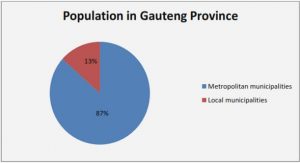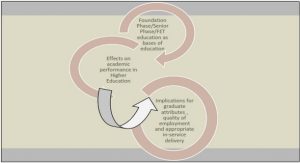Get Complete Project Material File(s) Now! »
The Chain Model
The approach which I have called the ‘chain model’ divides the narrative into peri copes. The peri copes are then linked to each other and the manner of and basis for the linkages described in detail. In this way the structure of the story becomes clear. This method is followed, among others, by Murphy (1981:153), Loader (1977:95-109,1980:146) and Schutte (1989:29-42). Since Loader takes the analysis of Murphy a step further, and since Schutte’s own pericope division (1989:27-33) shows only a minor departure from that of Loader’s, we will use Loader’s pericope division and structuring for the purpose of discussing this model. Loader defines structure as ‘the way in which the various pericopes in themselves are built up as well as the arrangement of these larger units in the composition of the book as a whole’ (1977:95).
The narrative is divided into 14 pericopes according to this structure. The pericopes are linked to each other as shov..rn on the left side of the diagram and represent the unity of the narrative on the surface level. The linkages between pericopes on the right side of the diagram represent the deep structure of the narrative. Thus surface and deep structure are inter-related, giving the narrative its compact unity. The integration of surface and deep structures also suggests that underlying this chain-like arrangement is a chiastic pattern. Schutte (1989:31) differs from Loader in that he combines two of Loader’s pericopes, no 4 (3:1-7) and no. 5 (3:8-15) without providing an explanation for the change. Now, chapter 3:1-7 (pericope 4) describes (pericope 5) describes the victory of Haman. The counterpart to this situation is to be found in 5:914 (pericope 8) and 6:1-13 (pericope 9) respectively. Schutte retains pericopes 8 and 9 of Loader’s structure as separate pericopes and does not combine them. Since pericopes 8 and 9 are mirror images of pericopes 4 and 5, it seems to me that Schutte must be consistent and retain Loader’s division, that is, keep pericopes 4 and 5 as separate pericopes. In the diagram pericope 3 (2:21-23) is linked, on the level of the surface structure, to pericope 4 (3:1-7) but on the level of the deep structure to pericope 12 (9:1-19). According to Loader the reason for this is the fact that the first clash between Haman and
Mordecai (pericopes 4 and 5) ends in a victory for Haman. This clash is described in pericopes 6 and 7. The second clash (pericope 8) results in victory for Mordecai (pericope 9) . The second clash is developed further in pericopes 10-12 in that it is now extended to the clash between the Jews and their enemies. At the point of the second clash the victory of Mordecai prefigures the victory of the Jews over their enemies and, in the light of this prefiguring, the function of pericope 3 becomes clear. It shows that Mordecai should have been rewarded but he was not. The reward is delayed until pericope 9. In this way pericope 3 contributes to the mounting tension between ‘Mordecai’s merit and Haman’s temporary victory over him’ (Loader, 1977: 97) .
The fourth phase in the fall of Haman 6:13-7:10
We reach now the fourth and final stage of Haman’s fall. It culminates in his execution and exit from
the narrative, though he continues to exercise an influence through the decree he issued for the destruction of the Jews. The unit 6: 12b-6: 14 functions as an introduction to the next section of the story because pivotal to it is the prediction of Haman’s fall. In addition, Haman’s departure from home for the banquet (6:14) is symbolic of his permanent departure from this life, because he does not return home from the banquet. He is hanged on his own gallows. The occurrence of f~n (gallows) in 5:14 and then again in 7:9-10, underscores this symbolism, it being interrupted by the honouring of Mordecai by Haman ( 6: 1-12) at the command of the king. The s arne word ~ i1 1 p 4 : 7 , 6 : 13 ) is used by Haman and Mordecai to recall their experiences, but the contexts are now reversed. In chapter 4 Mordecai changes from resistance to mourning, and now Haman changes from certainty ( 5: 14) to shame. The king’ s decision to honour Mordecai in exactly the manner recommended by Haman, overturned his own plot and made a public spectacle of him. This overturning of events re-in forces Mordecai’s claim made in 3: 3-4, namely, that he is a Jew, and therefore that the law does not apply to him, which is affirmed by the prediction of the wife and friends of Haman which follows in 6:13b. Verse 13b is joined to v13a by the 3 masculine singular pronominal suffixes 1, 1, and 1″~_. In addition, the repetition of the terms 1 « r.J::>n and 1 »:::li1~ and the phrase 1nl.V~ ID11′ provides a link between v13 a and b. The clause details the response of Haman’s wife and counsellors (wise men). The content of their speech is the prediction of his ultimate fall given the fact that he has already started ( n1?ni1) to fall before Mordecai. They are here referring to the humiliation suffered by Haman when he has to honour Mordecai at the command of the king.
What is noteworthy is their reasoning ,namely, that Mordecai’s Jewishness will result in the final fall
of Haman; for thev sav 1? ?::>1n-~? . … « ~::>117.) C »11i1″~i1 l71lr.J t:l~. The fall of Haman is regarded by his wife and advisors as inevitable, which prepares for v14a. The discussion between Haman, his wife and advisors is interrupted by the eunuchs of the king who came to take him to the second banquet, as indicated by the expression 0″~1:J1r.J C11l7. With this interruption the scene moves from Haman’s house back to the palace. The two pronominal suffixes C »~ and C as well as the pronominal suffix 3 masculine joins v14a to v13b. singular 1 The purpose of the eunuchs is given in v14b, which is linked to v14a via the 3 masculine plural pronominal suffix 1, and which refers to those who came to fetch Haman. This scene in which Haman is hurriedly fetched to be taken to the feast prepared by the queen, reminds one of chapter 1:10 where Vashti is sent for. This is also in the context of a feast, and which results in her downfall.
1. Chapter One
1.1 Statement of the problem and Hypothesis
1.2 Objectives of the research
1.3 Method of research
1.4 Procedure
2. Chapter Two: Overview of Literature
3. Chapter Three: Models used in the Analysis of the Esther narrative
3.1 Introduction
3.2 S~mnetrical Model
3.3 Chain Model
4. Chapter Four: Analysis of the Esther Narrative
4.1 The Cyclical Model
4.2 Structural Anaysis 1:1-2:20
4.3 Structural Analysis 2:21-8:17
4.4 Structural Analysis 9:1-10:3
5. Chapter Five: The Role of the King
5.1 Introduction
5.2 The role of the king in 1:1-2:20
5.3 The role of the king in 2:21-8:17
5.4 The role of the king in 9:1-10:3 210
6. Chapter Six: The portrayal of the king
6.1 Introduction
6.2 Characterisation in Narratology
6.3 Evaluating past charatcterisations of the king
6.4 Characterisation of King Ahasuerus in Esther
6.5 The portrayal of the king in 1:1-2:20
6.5 The portrayal of the king in 2:21-8:17
6.6 The portrayal of the king in 9:1-10:3
7. Conclusion and Summary
8. Bibliography
9. Abstract






